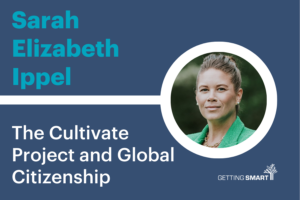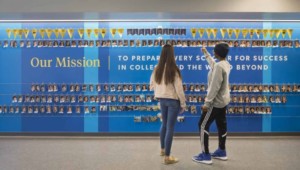Building a Thoughtful Blend

Yesterday I visited a small high school that needs to find ways to better meet the needs of a challenged student body. Here’s part of my letter to the principal:
Thanks for the school tour yesterday. It sounds like you want to create a competency-based blend that builds on your roots with the Coalition of Essential Schools. Your school has a rich intellectual mission and your faculty values authentic assessment. They faculty is making some use of online content and collaboration tools like Edmodo but they are skeptical of learning technology in a primary delivery role.
Your students are diverse, relatively transient, and predominantly from low-income families. Most play games on consoles or phones but it sounds like few have access to a computer with broadband for homework.
Blended intro. Innosight Institute’s report The Rise of Blended Learning defines it as “any time a student learns at least in part at a supervised brick-and-mortar location away from home and at least in part through online delivery with some element of student control over time, place, path, and/or pace.”
To their definition, I add a requirement that the shift to an online environment for part of the student is intended to boost learning and operating productivity.
Innosight points to two basic models, rotation and flex, discussed below.
Rotation. Some blended schools rotate between online and classroom environment. They typically manage matriculation in cohorts.
The most well know example of a high school rotation model is Carpe Diem Collegiate High School where students spend about half their time learning online and the other half in subject matter workshops.
Another example is NYC iSchool, a problem-based school where students rotate through online skill building and test prep.
Some supplemental blended math programs like ST Math are rotation models where students spend two 45 minute sessions each week in a lab setting. “Flipped classrooms” that encourage at home content consumption are another example of a rotation model.
I’m enthusiastic about several new products like StudySync “that inspires higher levels of reading, writing and critical thinking” and help to engage students across the humanities. I’m also a fan of automated essay scoring in products like Write to Learn, a reading and writing environment that provides immediate and specific six-trait feedback to students.
Flex. Some blended models rely predominantly on online curriculum. Students typically move at their own pace with some one-on-one and small group instruction.
Darren Reed, the Vice President of Blended Schools at K12, runs several flex schools in the Bay Area. AdvancePath runs a national network of dropout prevention academies that use a flex model with a morning and afternoon shift.
Some blended math programs are flex models. Programs that use Apex curriculum or Khan Academy tutorials for primary delivery are flex programs. Flex differs from rotation in the amount of asynchronous student work and the extent to which students move at their own pace.
School of One, a NYC 6th grade math pilot, is currently a rotation model. An algorithm recommends two learning experiences per day for each student. Over the course of a week, most students will cycle through four or five modalities. As School of One and similar products like McGraw’s Power of U expand, in many cases they will migrate to flex models as the platforms enable more independent and customized learning pathways and competency-based environments.
What’s next? All of these high school models are still organized around courses and credits and none of them have well developed Common Core-aligned strategies and tools for managing competency-based progress.
The best book on competency-based learning is Delivering on the Promise by Rich DeLorenzo of the Reinveting Schools Coalition (RISC). It is rich with tools for building a competency-based environment. Rich’s team has a platform called Educate that is bound to get even better over the next year.
New Tech Network has a project-based learning platform that does a good job supporting projects and a decent job supporting competency-based learning.
Standards-based gradebooks are getting better. Pearson’s PowerTeacher has a detailed gradebook. Like most other products it presumes batch processing—most kids doing the same work at the same time.
Learning management systems that were built to host courseware are gaining capabilities to serve up a variety of learning objects (e.g., BrainHoney, D2L, Moodle using MoodleRooms). Most are attempting to add the social learning features of platforms like Edmodo.
But that still leaves a gap for a compelling Common Core-aligned badge system with units of study that provide multiple modalities, multiple assessments, and dashboard planning and monitoring tools. As these ‘merit badge’ systems are developed, many schools will replace (or at least supplement) courses and credits with smaller chunks of competencies that require students to frequently show-what-they-know before progressing. Khan Academy has a pretty good version of badge system. It’s how most next gen schools will manage matriculation.
For more, read:
- Cracking the Code: Synchronizing Policy and Practice for Performance-Based Learning
- 6 Ways Digital Learning is Changing Teaching
- On Merit Badges
- Infographic: The Flipped Classroom
- Do the Classroom Flip: Humanizing School Through Technology
- Creating Cohorts in a Blended World






Alex
Have a look at this: http://www.youtube.com/watch?v=xj3Zc-SF0YE
I met this guy when I was a student at UT. I believe it.